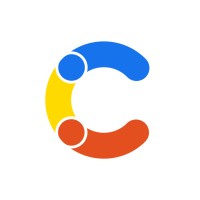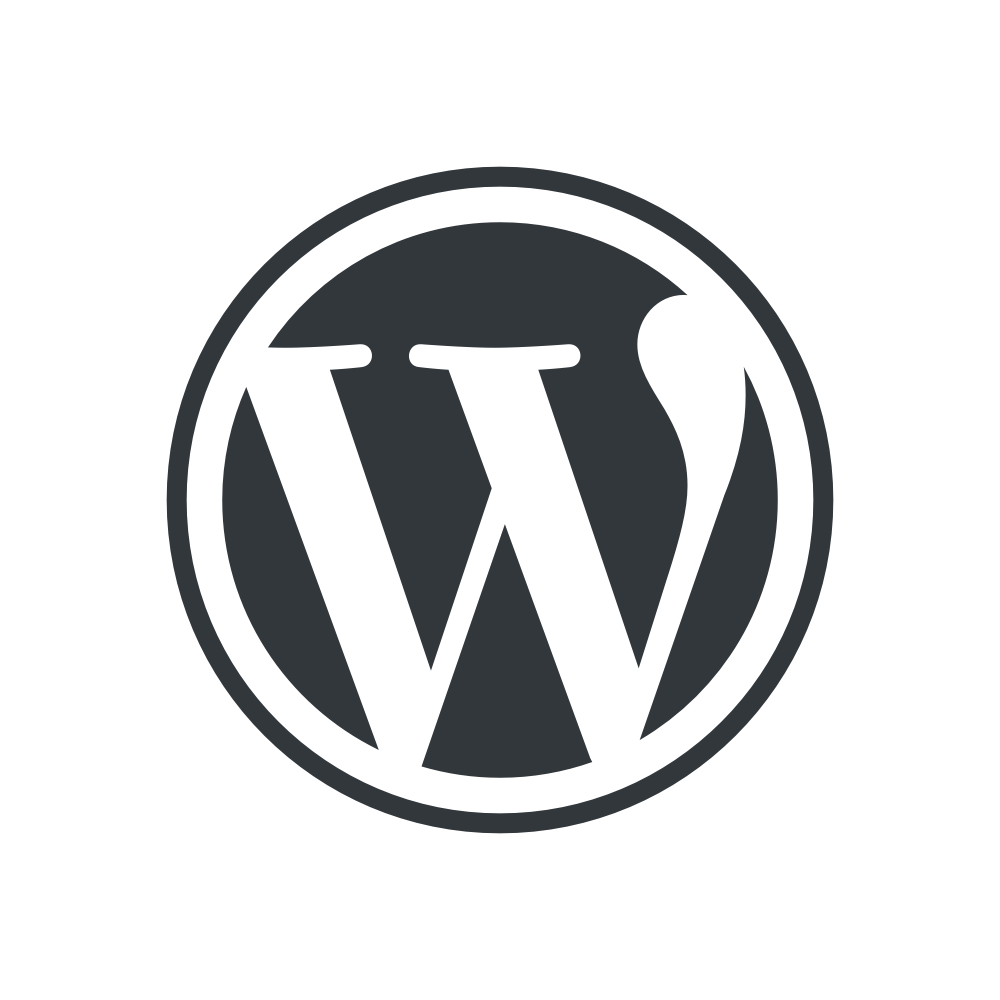

















Content management system tools, often abbreviated as CMS, are software developed to allow users to create, modify, publish, and store digital content on a website, blog, or other web properties. These tools enable users to develop and publish content online in the visual style they want using different features and templates without technical knowledge.
In other words, content management system tools help users build a website or add and edit existing content on an existing website without the need to write all the code from scratch or even eliminate the need for coding.
On a more technical note, a content management system consists of two core parts:
Businesses and other organizations use CMS tools to add depth and increase functionality to curated content on a website or even a current CMS. Content management systems are user-agnostic – they can be used by organizations of all sizes, from small startups to big enterprises, and across different practices, disciplines, and industries.
Integrations may be available, depending on the chosen CMS. Some work in conjunction with web content management software or WCM, content analytics software, customer relationship management (CRM) platform, and marketing automation software. They may also work as standalone systems to tackle specific content-related needs. As CMS fills content functionality gaps within the environment where it’s installed, it makes content-specific processes and tasks more efficient.
To summarize this section, for software to qualify as a CMS tool, it must:
The previous section already alluded to some benefits of using CMS tools, but here are specific benefits that can impact the efficiency of your content production process, your team’s productivity, and your content-related goals.
Before the widespread development of CMS software, adding content to a website or even just starting a blog would require basic HTML coding, which limited content creation to web developers and those with coding knowledge.
CMS tools “democratized” content production. They empowered non-technical users to create and manage content, tailor-fit the design of websites and blogs, and install extensions to add specific functionalities – all without coding. At the same time, it allows more technical users to add custom codes to get more granular control over their content.
Old content platforms were limited to a linear content production line. Creators write and design the content, developers code, and IT professionals add any needed additional features.
With modern CMS platforms, multiple users can access and work in the backend of the system synchronously. That means in any given scenario, marketers can produce and add content, IT professionals can implement protocols, and developers can add custom codes, all at the same time.
Overall, this synchronicity improves collaboration and sharing across different task owners who are involved in content production.
The “plug-and-play” characteristic of CMS platforms facilitates the expedient modification of design. Since most CMS tools are modular, it’s easy to swap out images, change layouts, alter color schemes, and perform other design alterations.
Additionally, content management systems typically come with pre-loaded templates and themes. With a few clicks, users can switch from one design to another as the need arises. For those with programming skills or for organizations with in-house development teams, additional design customizations can be added with a few lines of code.
Another benefit of eliminating the need for coding is uninterrupted content management. With more stakeholders being able to participate in the content management process, CMS tools pave the way for seamless and continuous collection, creation, delivery, retrieval, publishing, and governance of content pieces across all formats and media.
Given the flexibility and versatility of CMS software, it comes as no surprise that it’s utilized in several ways by many professionals, businesses, and different departments in an organization. Today, almost every business employs at least one content management platform, if not more. In some scenarios, CMS tools are deeply entrenched within a team’s day-to-day activities that they almost go unnoticed.
CMS tools are handy for the following segments:
Ever since the catchphrase “Content is King” became one of the core principles of successful online marketing, the need to streamline content development became a priority of digital marketing teams.
CMS tools revolutionized how digital marketing teams build, manage, publish, and monitor content. Teeming with features, digital marketing teams can execute their content strategy at pace and scale.
Apart from content marketing, digital marketers can also leverage CMS tools at each step of the buyer’s journey – from awareness to engagement, lead generation to nurturing, and customer acquisition to retention.
Content managers are mainly responsible for overseeing a business’ content initiatives from start to finish. They deal with the “How?” and “Who?” of content and allocate resources (people, assets, processes, and technology) for content strategy and governance to take effect. This includes assigning roles and responsibilities, creating workflows and dependencies, storage, editing and approval, and publishing.
With a number of moving pieces and several team members involved, it’s easy for things to fall through the cracks.
This is where CMS tools come in as they allow content managers to centralize major content processes, store vital digital assets, create a space for collaboration and sharing, provide a platform for reviews and sign-offs, publish approved content, and make it easy for future iterations.
Blogging remained one of the top content strategies over the years. Professional bloggers, hobbyists, businesses, and other organizations, have used blogging to generate traffic, acquire leads, create thought leadership, and push conversions.
That said, blogging has become more competitive and more sophisticated over time, and while rudimentary blogging platforms still have a place, CMS tools can provide bloggers with a more robust platform to create and publish content.
How? One, content management systems allow for better branding with easy-to-use and comprehensive design functionalities. Content management systems also have more capabilities that complement blogging such as the creation of landing pages, funnels, and other web pages. Likewise, the integrations that are available in CMS software add external components to a blog site if bloggers decide to do so down the line.
Publishing content is one of the best, easiest, and fastest ways to create authority and credibility, two crucial success ingredients for solopreneurs and individuals – coaches, financial advisors, consultants, and real estate agents just to name a few – selling their expertise.
Since most of these solo professionals and business owners typically have limited technology resources, CMS tools give them the capability to develop and publish comprehensive content assets even without a team of web developers, designers, and other IT experts.
From blogs to FAQ pages, portfolio pages to visual galleries, solopreneurs can take advantage of CMS software to leverage content to build a positive reputation for their practice using content.
By default, when people talk about digital content, they think of content implementations that are intended for external consumption. However, internal functional teams and departments can use CMS tools to create, manage, and publish digital content for an array of purposes.
For example, operations and admin teams can create Wiki sites that document important company-wide internal processes. CMS platforms can also be used to develop employee self-serve resources, knowledgebases, training portals, and more. They can also be employed to disseminate company-wide announcements.
Since all content published is digital, it’s easily modifiable when there are changes and updates to current processes and practices. Plus, because of the highly collaborative and highly-centralized nature of CMS tools, multiple internal stakeholders can work on a project at the same time and ensure that future iterations will be based on the most recent version of the content.
Businesses, organizations, and individuals have varying content needs and goals and would therefore require different content management solutions. While the different types of CMS platforms share some common functionalities, several nuances make them different. These variations make certain CMS tools more suitable based on needs, strategies, and intended execution. Not one is better than the other per se – it all boils down to what the user needs and the resources available to them.
Integrated CMS are feature-rich content management platforms typically offered by a single company as a SaaS (Sofware as a Service) – also called proprietary CMS. At the bare minimum, integrated CMS provides content management, web hosting, and customer support from one single supplier.
Most, if not all, integrated CMS platforms come with a powerful content editor in an easy-to-use drag-and-drop interface, as well as built-in templates. This allows users to create visually complete content pages/sites without external resources or digital assets.
Aside from these core functionalities, modern integrated CMS tools may also come with pre-loaded capabilities that go beyond basic content management. These include support for e-commerce, events management, paid content management, booking management, and course portals just to name a few.
Integrated CMS Advantages:
Integrated CMS Disadvantages:
As the name suggests, an open-source CMS is free to use which means that users are not required to pay license fees. Open-source content management tools are created and maintained by a global community of developers.
The source code for these CMS platforms is public – anyone can view, modify, distribute, extend and create new features as required by the community. CMS software developed under the open-source framework relies on community initiatives and updates are subject to peer review. Since open-source CMS thrives on collaboration, it often boasts of better longevity and longer usability than proprietary ecosystems which typically rely on just one author or owner.
An open-source CMS platform consists of a backend database for storing digital assets and content, as well as a backend application for content creation. Traditional architecture open source CMS has an attached frontend for displaying content to users.
As of the time of publishing, most websites are built using open-source CMS platforms.
Open Source CMS Advantages:
Open Source CMS Disadvantages:
A headless content management platform is a “back-end only” CMS software where the content repository or where the content is stored (referred to as the “body”) is decoupled or separated from the presentation layer (referred to as the “head”).
Headless CMS can either be proprietary or open source. Either way, the main benefit of using a headless CMS is its presentation-agnostic – it doesn’t care how content is displayed, which device it’s displayed on, and which ecosystem it’s presented. Its only focus is to store and deliver structured content and allow content creators and editors to collaborate on content development.
For users, this allows them to deploy the same content across different frontends which is key to an omnichannel content strategy.
Use cases for opting for a headless CMS include: separating content from the tech stack of a website for faster implementation; use for websites or web apps that use JavaScript frameworks; working well with websites created using static site generators; development of native mobile apps for different operating systems; enrich eCommerce stack; and manage content for an intranet.
Headless CMS Advantages:
Headless CMS Disadvantages:
There are hundreds of CMS tools to choose from, each offering unique capabilities to fulfill different business purposes. A side-by-side comparison of these CMS products can be useful, but the important question is this: What features are crucial – now and in the foreseeable future – that support specific content objectives?
To select the best CMS software, businesses, organizations, and individual users need to ensure its features align with their needs and goals.
At the bare minimum, a CMS tool should have most – if not all – of the following standard features.
As CMS stores content in the cloud, it should be easy to share assets or folders to collaborate with others both inside and outside an organization. Everyone who has access to the content will have access to the latest information—wherever they are, whenever they need it. Sharing and recording content modifications enable users, particularly content managers, to monitor how and when each shared item was accessed.
Additionally, multiple users should be able to access and work in the back end of a CMS simultaneously. That means at any given time, marketers can be producing content, IT professionals can be implementing security patches, and developers can be programming custom code to the theme. In a highly collaborative CMS platform, multiple stakeholders can work on the same piece of content at the same time.
Clearly defined roles and responsibilities are vital in the content management process.
Coupled with this, the ability to set role-based access controls and permissions is critical to ensure that different users are only working on CMS areas that are relevant to their designated responsibilities.
Typically, only one or two select people (usually the content managers) will have full admin privileges that give them complete access to every part of the CMS platform. Other team members with more specialized and specific roles may only access certain system areas that are relevant to their jobs.
Setting access and permission limits reduce the likelihood of mistakes, data leaks, and security breaches, and it makes it easier to track down the source when issues arise.
Further, role-based access controls and permissions make it easy to grant access to new users as well as revoke access for members who are no longer part of the team.
Related to setting access controls and permissions is the limiting publishing capabilities to specific team members.
No matter the size of a business, it’s likely that more than one person will be publishing content on your site. This is why publishing controls are important in any CMS. They prevent users from executing actions on the system that they shouldn’t. For example, content managers wouldn’t want first-time content writers publishing their posts without approval.
Websites, blogs, and other content-related web assets evolve. Some tweaks are minor while some are major overhauls.
Rather than launching these changes on a live site, it’s ideal to test out the changes, test out their functionalities, iron out design kinks, identify bugs, and make sure that they improve the user experience before rolling them out.
Staging allows content managers and the other stakeholders involved in the approval process to preview changes in a private beta environment while mimicking how the new content will behave once it goes live.
In addition to role-based access and publishing permission, users will benefit from CMS tools that have a mechanism to save and track progress. During content development, there may be some scenarios wherein users may need to revert to an old version of a project. CMS platforms that store version history make it easy to retrieve if and when the need to recover previous content versions.
Another feature to consider is how a CMS tool handles backup. In cases of data loss, security breaches, or a broken website, having an extra copy of a website archived in a cloud server will prove to be beneficial.
Some content management systems perform content backups automatically while some require backups to be done manually. There are CMS solutions that include backup as a native feature while there are platforms wherein you need to install it as an extension. Users should consider these when shortlisting CMS options.
Businesses, organizations, and individuals who want to target an international audience should opt for a CMS that allows multi-language content creation. Instead of hiring experts to rework content pieces to different languages which could take time and money, CMS tools with a multi-language translation feature make this process quick, easy, and inexpensive.
On the front end, this feature also allows users to switch between languages if and when they need it.
The standard features above are already enough to build a complete website or blog. However, users with specific needs, those who want to scale their content production, and those who want to get better results from their content initiatives would need additional capabilities outside of the standard set of features.
Below are key CMS features if you want to scale your content development.
Not even the most advanced CMS will have every feature that will address all the needs – current and future – of businesses, organizations, and individual creators. Instead of spending time and resources looking for that “one perfect CMS,” users should opt for a CMS solution with robust integrations to leverage third-party software into their content workflow.
Here are a few of the integrations users should look for when shopping for CMS tools:
Most of the time, integrations come in the form of “extensions” or “plugins” for a given CRM, available to download from its marketplace. So when choosing a CMS, users should pay attention to the availability of these apps, especially for those looking into getting an open-source CMS.
Even the best content will go to waste if no one sees it. While new traffic sources have surfaced over the past few years, traffic coming from search engines remains significant.
It’s important that a CMS is fundamentally SEO sound. This means having proper HTML markup, responsive design elements, and SEO-friendly permalinks. All these are fundamental to ensure that a website, blog, or other online content properties rank well on search engine results pages.
Likewise, content managers should look into additional search engine marketing features – whether it comes in the forms of native apps (in the case of integrated CMS) or extensions and plugins (in the case of open-source CMS).
Data-driven content management decisions are vital to stand out in today’s competitive content landscape. Content managers need to track and monitor their content strategy’s performance using measurable indicators.
CMS tools that have a built-in analytics dashboard are ideal. Comprehensive data that shows traffic source, how visitors are interacting with content on different devices, and which types of content are getting the most engagements just to name a few are important to constantly fine-tune current content executions.
If a CMS tool doesn’t come with analytics, it should at least be easy to integrate it with an external analytics platform.
Taking advantage of pre-loaded, customizable templates is a good way to create content quickly and efficiently versus starting from scratch every single time. It simplifies the content development process and gives room for quick content rollouts.
That said, while it’s advantageous to have a CMS tool that offers ready-to-use pre-made templates, there should be room for customizations to ensure that every content is consistent with a brand identity and is flexible enough to accommodate specific and evolving content requirements.
Choosing the CMS that complements a business’ content strategy, meets current and immediate future needs, fits current resources, and supports content-related goals will ensure a positive ROI for any software investment.
Below are some key considerations when selecting a CMS tool.
How much should one spend on a CMS tool? There are a number of ways to answer this question, but one strategy is to compare its price vis-à-vis its features.
The key is to plan thoroughly and perform due diligence. For example, proprietary CMS platforms usually come with a comprehensive list of features out of the box, but content managers need to determine which of these are relevant to them.
Taking time to compare platforms also has its payoff. For instance, there are free plugins and extensions available in opens source CMS marketplaces that are at par with the native apps that users will be paying extra for when they opt for a proprietary CMS.
Speaking of plugins, another important consideration when shopping for CMS software is the availability of compatible themes, plugins, extensions, and apps. This added layer of technology doesn’t only extend the functionality and capability of the CMS, it also makes sure that it can evolve as the user’s need changes. This prolongs the platform’s usability and longevity and therefore increases ROI.
In a market dominated by pre-made CMS solutions, it’s often hard to understand why users would ever want to spend time and resources customizing something that is already great on its own.
The answer is this: The best CMS is one that will evolve along with its users. If a CMS platform is restrictive in terms of customization and personalization, addressing future challenges could be challenging. Customizability is therefore vital to support long-term scalability.
A website builder is an all-in-one platform designed to simplify the process of developing a website. Most of the time, website builders are hosted by the provider itself, so users don’t need to think about looking for a hosting service.
With a website builder, users have the capability to select a theme and make layout/visual changes by dragging and dropping elements around the screen. Compared to content management systems which often be expanded with third-party apps and extensions, website builders are usually limited to the features within the platform, up until a new version/update is released.
Web design software gives users the tools to create, edit, update, and publish web pages. Typically used by web designers, these tools are utilized to create a web page’s layout and content through HTM code modifications or by a WYSIWYG editor.
Web design software includes features to edit code and visualize design projects. Some web design tools also offer frameworks and templates to help users a website’s basic architecture. To make the process more efficient, many web design platforms also have built-in libraries that contain different design elements and shortcodes. While web design software and web builders share similar features, a web design platform would usually offer a more customizable and independent design environment.
Lastly, web design software allows users to import codes from tools such as text editors and visual elements from external design software such as vector graphics tools.